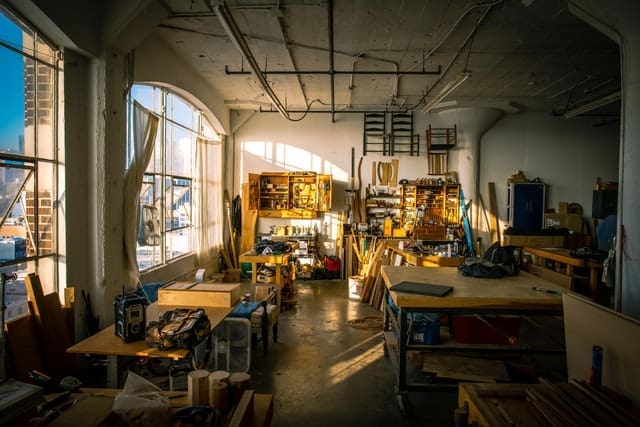When it comes to workplaces, especially in manufacturing industries that require a workshop, safety should always be the top priority. There are lots of tools and sharp objects that can seriously injure someone – even fatally. Angle grinders, compressors, and welding equipment are just a few examples.
While proper training and an induction checklist should not be missed when it comes to workshop safety, there are other things to consider when keeping your employees safe.
According to Safe Work Australia, in 2020, there were 194 work-related injury fatalities. Looking closely at the data, it becomes clear that most include machinery and manual labor.
Top workplace fatalities by occupation:
- Machinery operators and drivers
- Laborers
- Technicians and trades workers
Top workplace fatalities by industry:
- Agriculture, forestry, and fishing
- Transport, postal, and warehousing
- Construction
- Manufacturing
- Mining
- Electricity, gas, water, and waste services
Regarding work-related injury and disease, in 2019-20, there were 120,355 serious claims across Australia.
Top serious claims by a mechanism of incident:
- Body stressing
- Falls, trips, and slips of a person
- Being hit by moving objects
- Hitting objects with a part of the body
- Chemicals and other substances
The data doesn’t lie. Safety rules in workshops should be followed to a T.. While every workshop is required by law to have a work health and safety policy, a hazard list and risk assessment, and a risk control plan, employers should make sure that whoever uses the workshop is familiar with them.
Here are 7 workshop safety considerations
1. Personal protection equipment (PPE)
To make sure your employees are safe working in your workshop, first and foremost, they should use appropriate PPE and clothing. Some examples of PPE are goggles, hard hats, hi-vis clothing, earplugs, or safety shoes.
2. Check power tools
From proper training for the use of equipment to ensuring they are properly guarded when not in use, power tools should be a main point of focus when it comes to the safety of your staff.
Keeping tools clean and sharp and having clamps and bench vices available to hold work securely are just some safety considerations in a workshop.
3. Protection from electric shock
Trailing wires and cables are a hazard not only for trips and falls but also for electric shocks, burns, or fires. Frequently inspect the condition of switches and electric cords, provide fixed RCDs, and electric ground tools, and shorten or replace damaged cords.
4. Floor safety
Slips, trips, and falls are among the most common work-related injuries, but your workshop can minimize this by keeping the areas clean and decluttered and implementing floor safety measures. “Workshops are high-traffic areas, with lots of dangerous equipment around at all times. Overcoming floor height discrepancies and slip-proofing the floors will maximize the safety of your workplace,” says Leigh McAlpin, Director at Classic Architectural Group.
5. Use proper signage
Another way to keep your workers safe is to restrict the areas for walkways, stairs, and landings. Additionally, inspect the condition of all the signage and replace outdated and broken safety signs.
6. Storage and racking
Storing chemical substances in unmarked containers is a major workplace hazard. To prevent injuries, you must practice better housekeeping and ensure everything is properly labeled and stored. Store power tools safely to prevent damage and unauthorized use, and don’t leave cords where they can be run over or damaged.
7. Emergency equipment
Is your workshop equipped to handle emergencies? You should ensure that your workplace has handy fire extinguishers and first aid kits and that everyone knows where they are.
Conclusion
Managing hazards in your factory or workshop should be a continuous improvement process. These seven above ways are a fail-proof addition to promoting a safety culture that shows the people who work for you that you are serious about their health and safety. Additionally, taking a qualified first aid course can significantly help as it equips them with the necessary skills to handle emergencies effectively.
Featured Photo by Devin Berko on Unsplash




